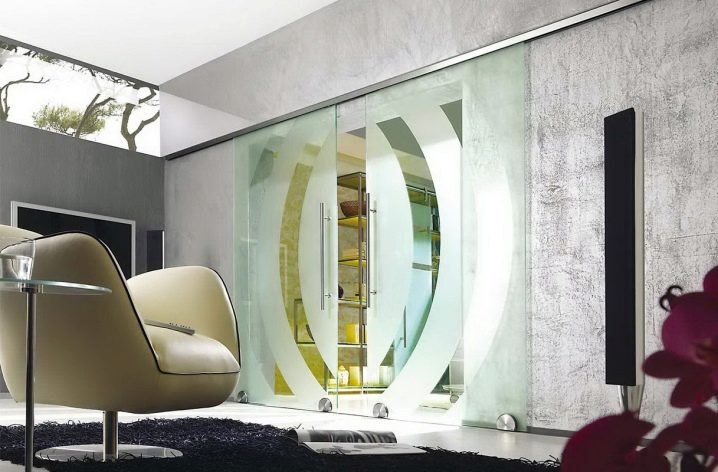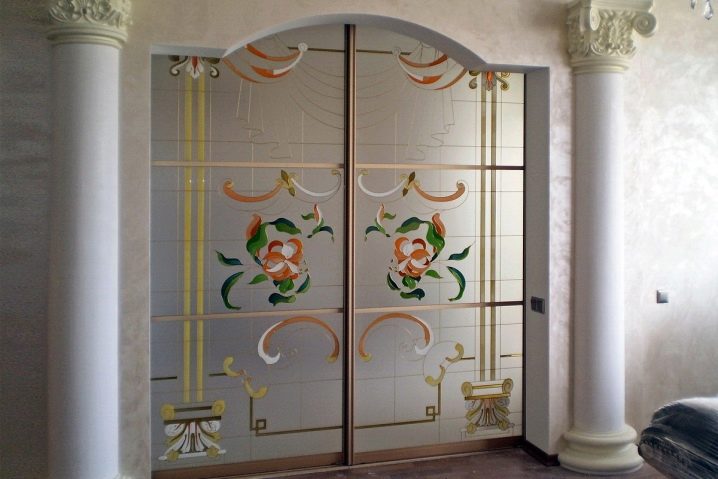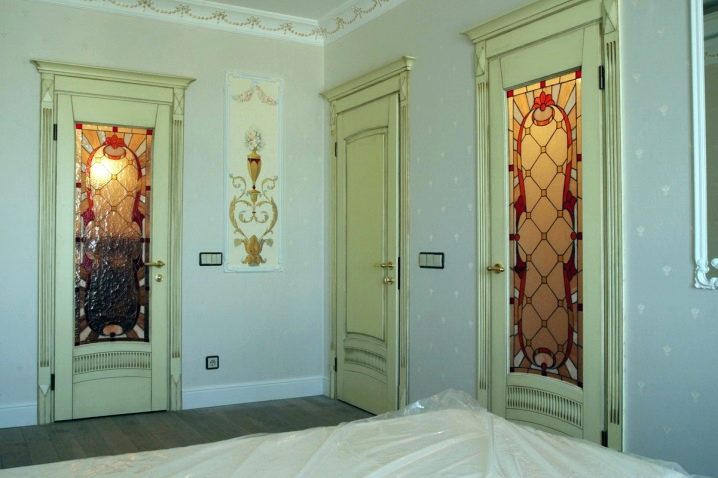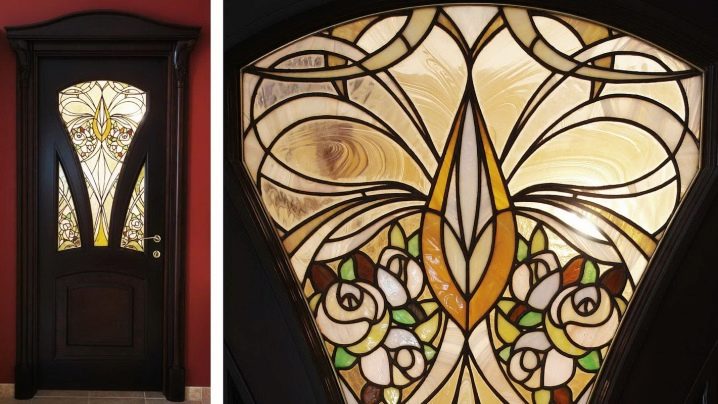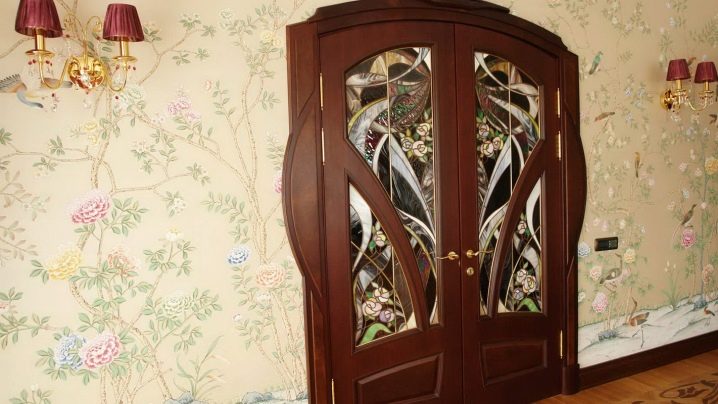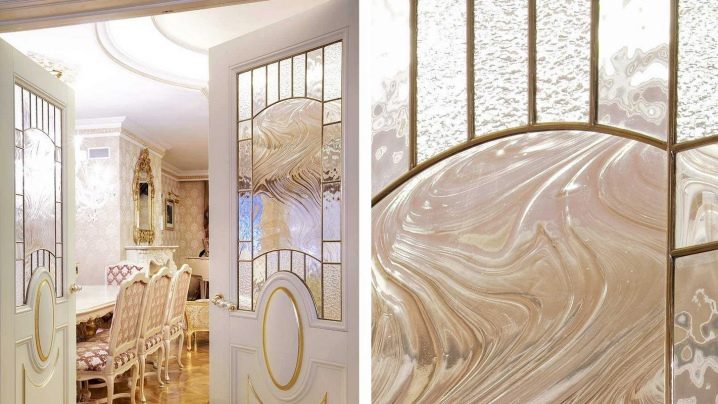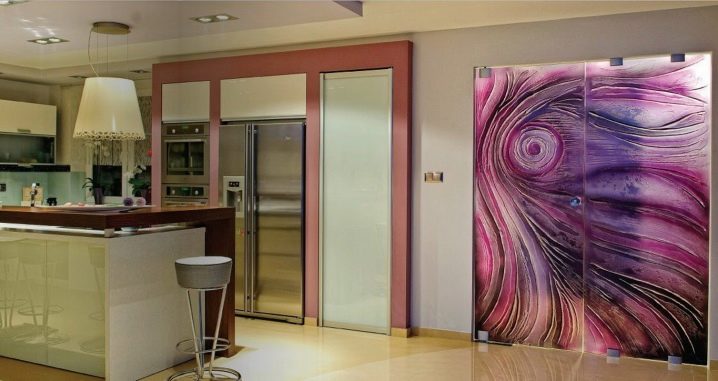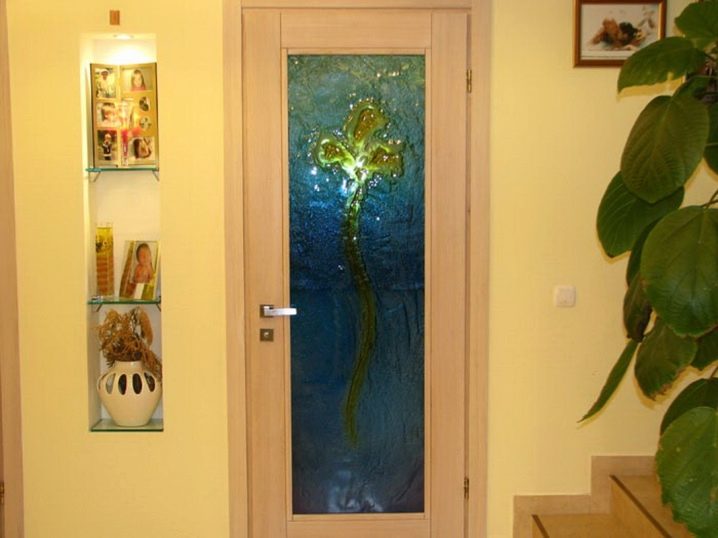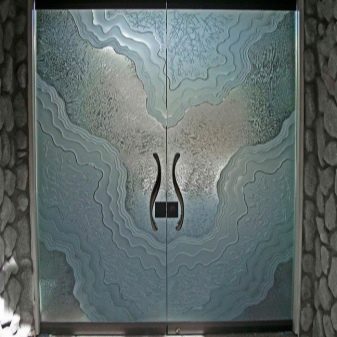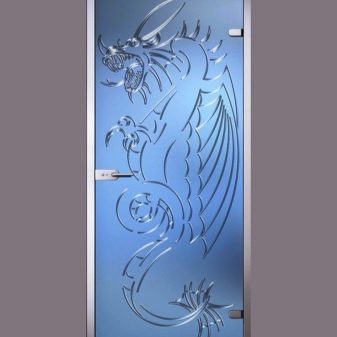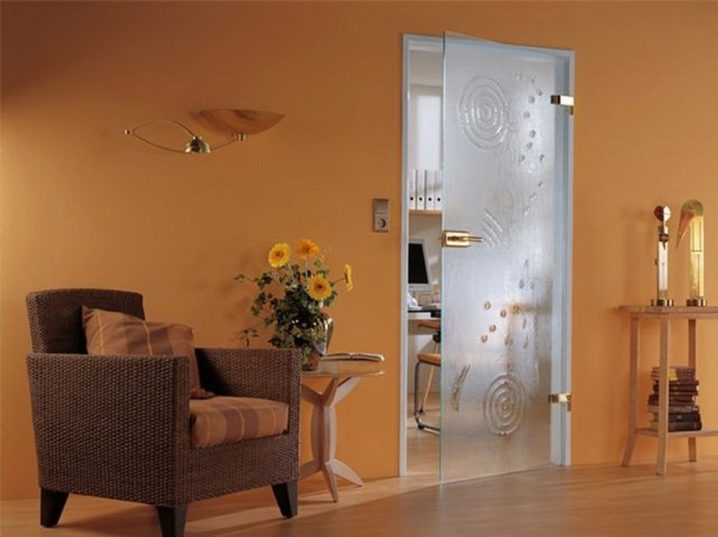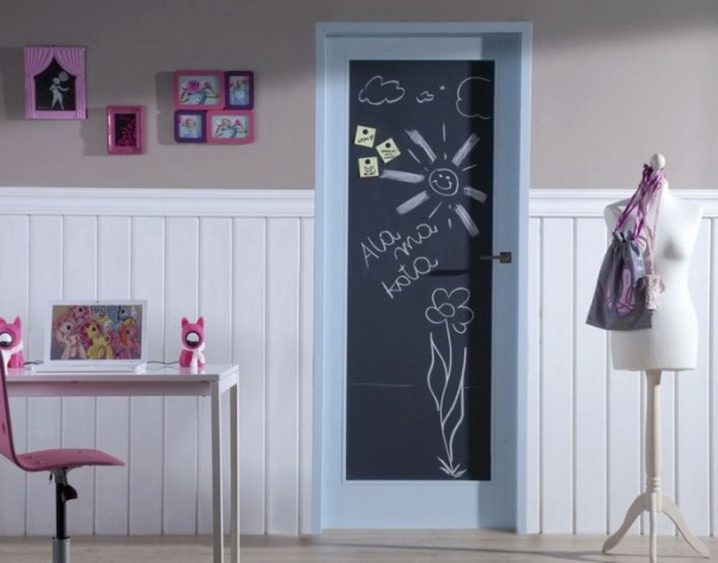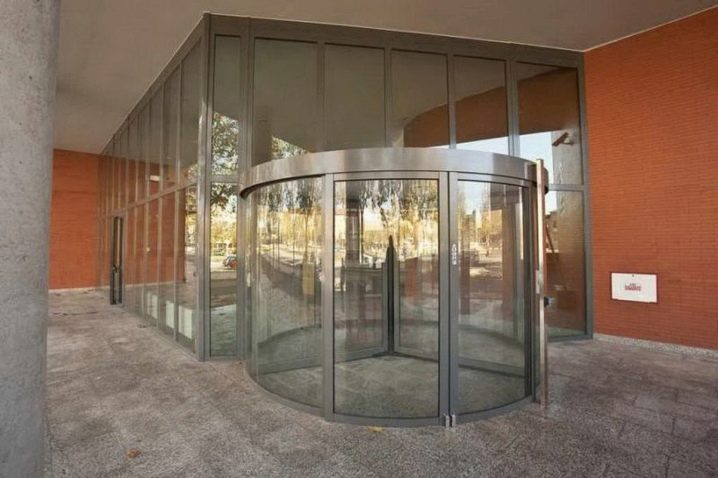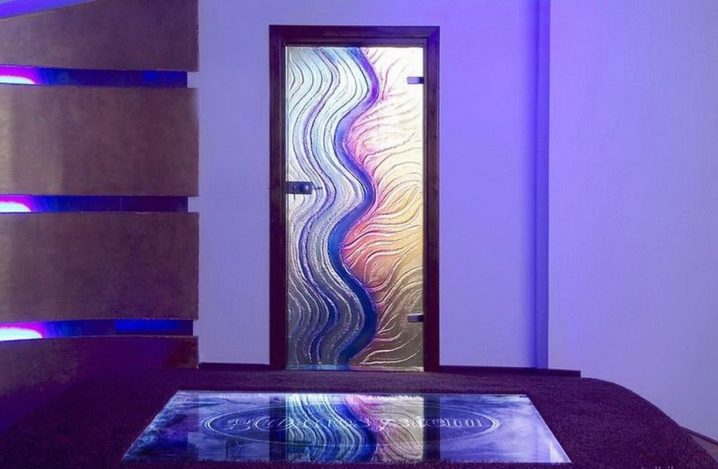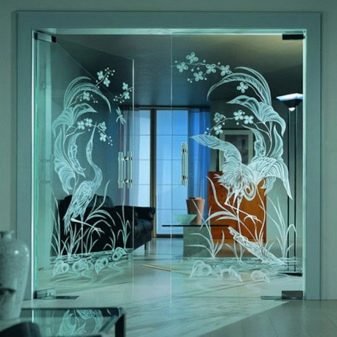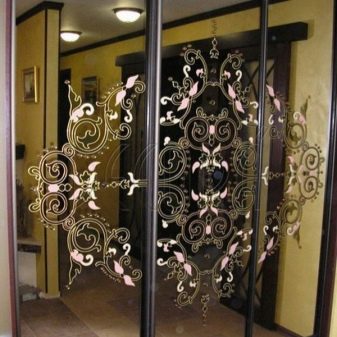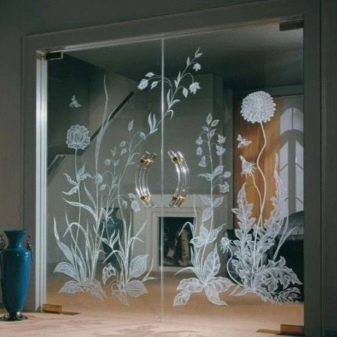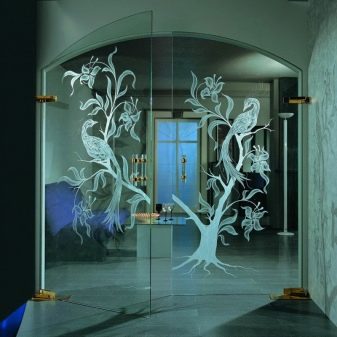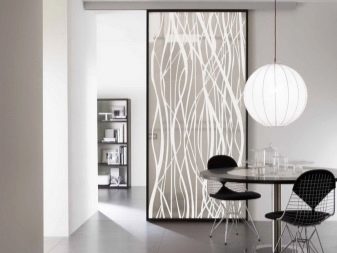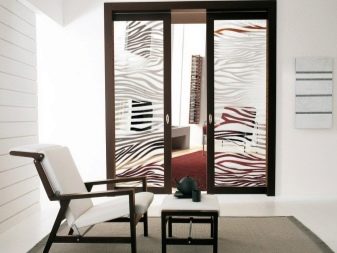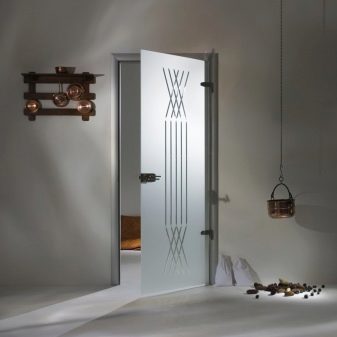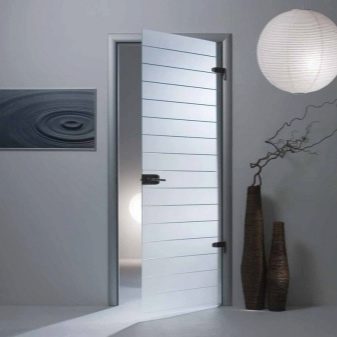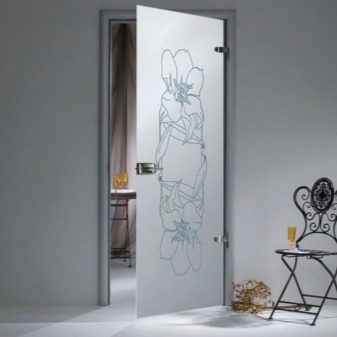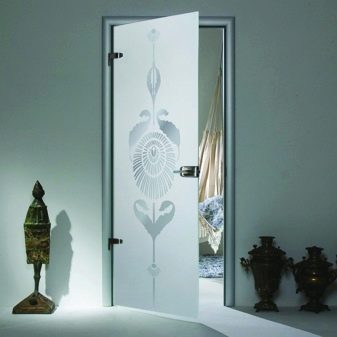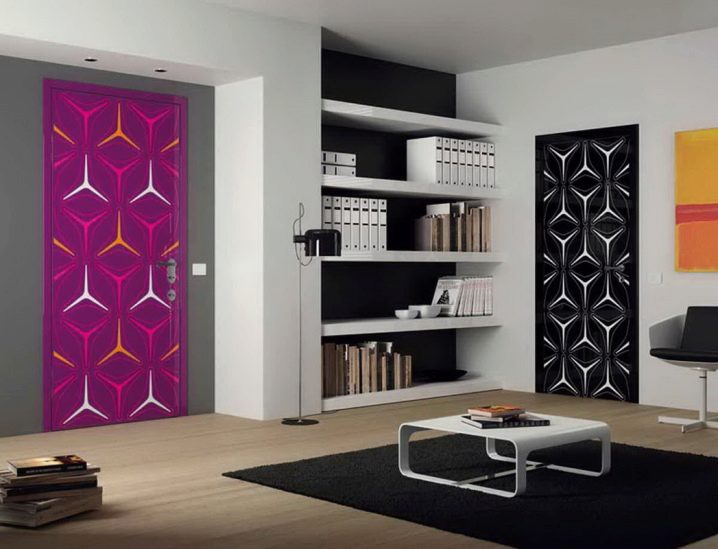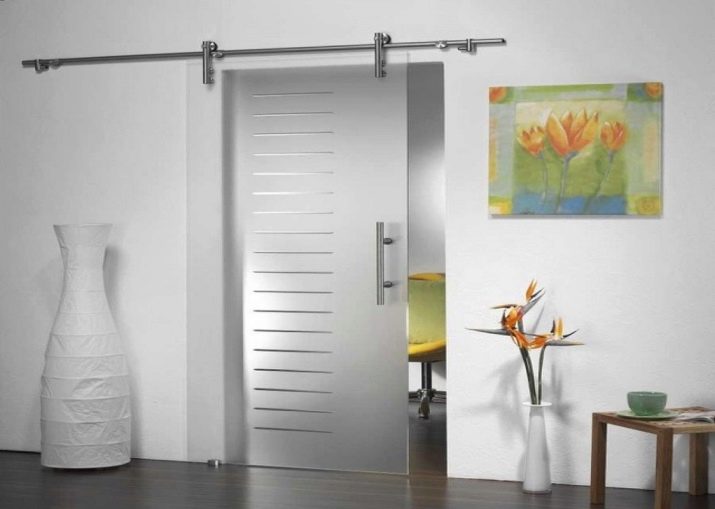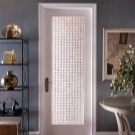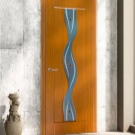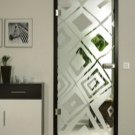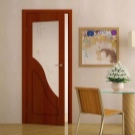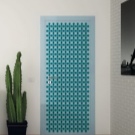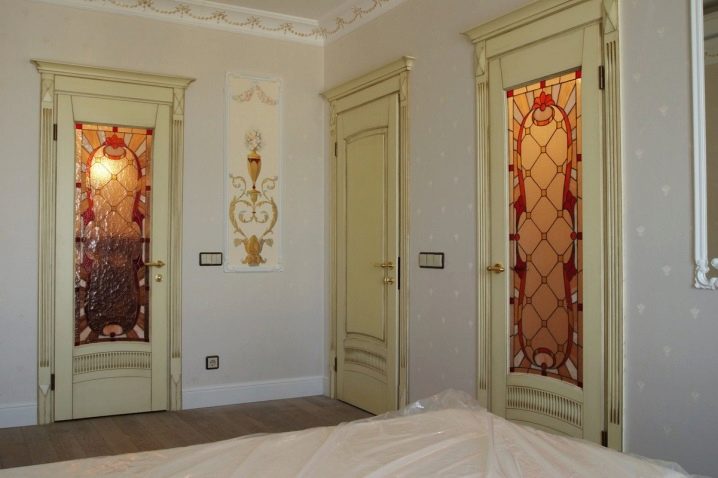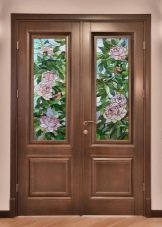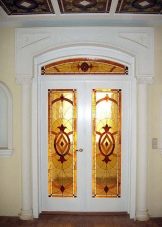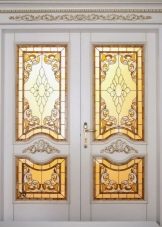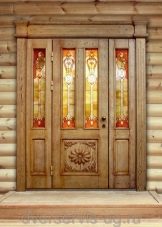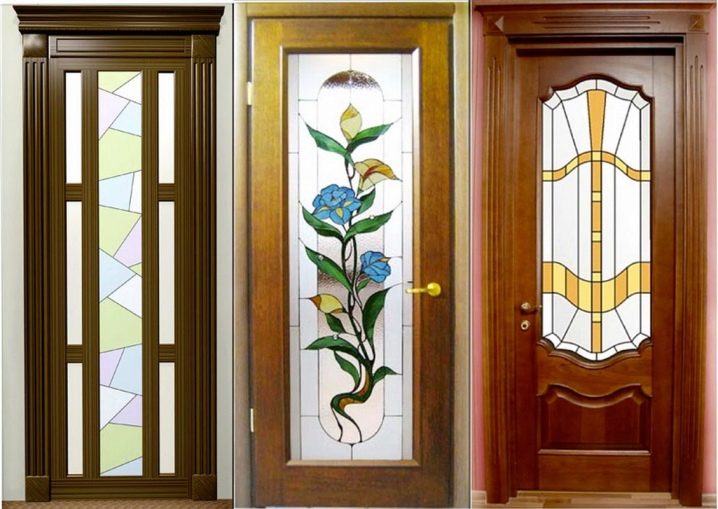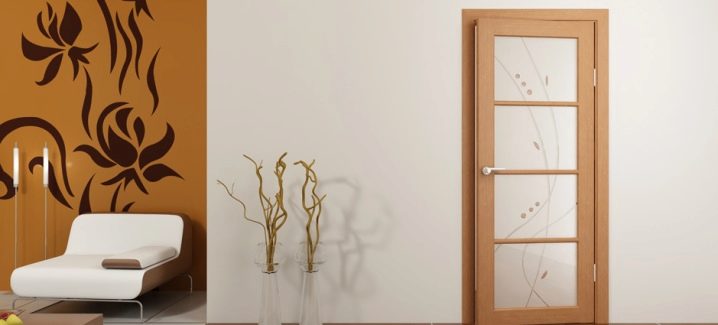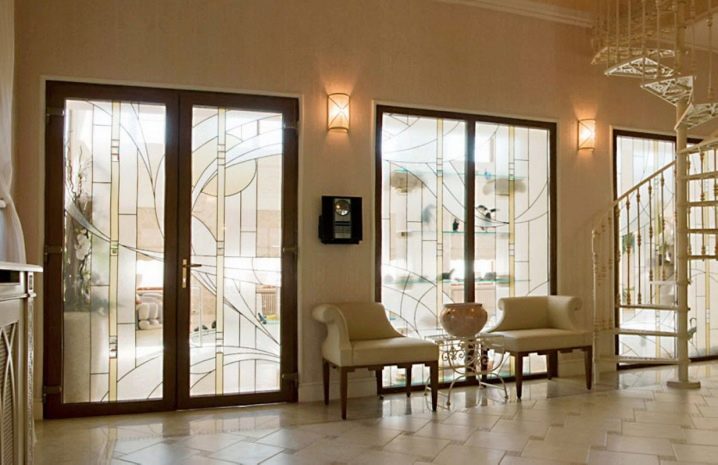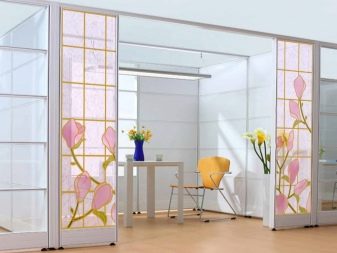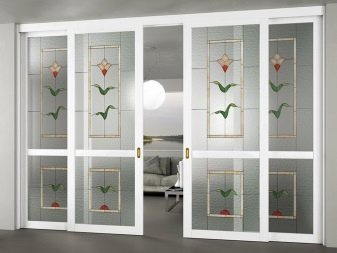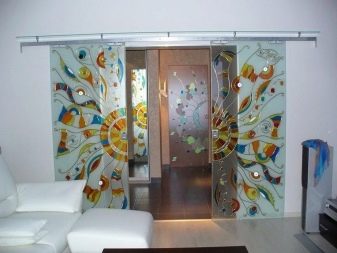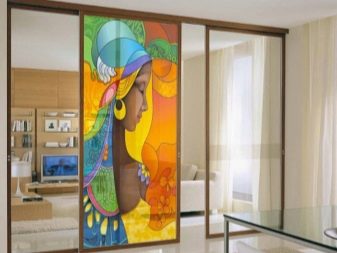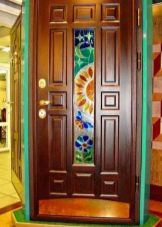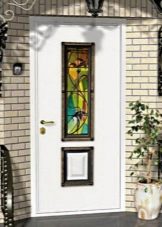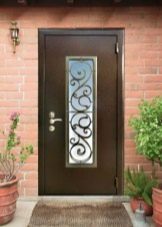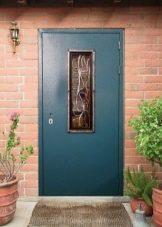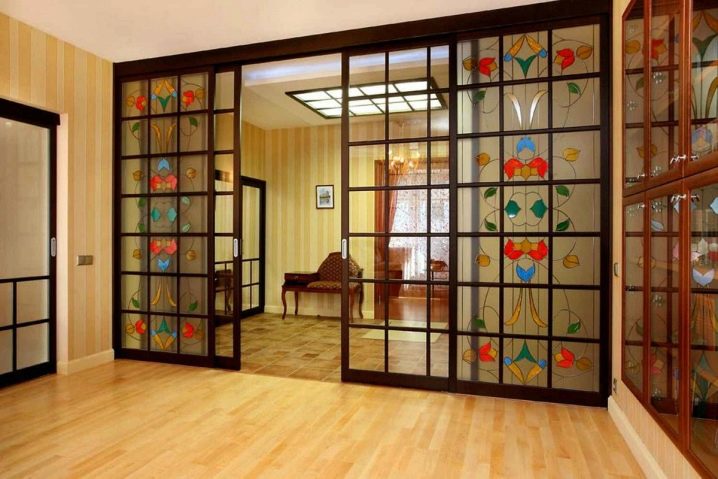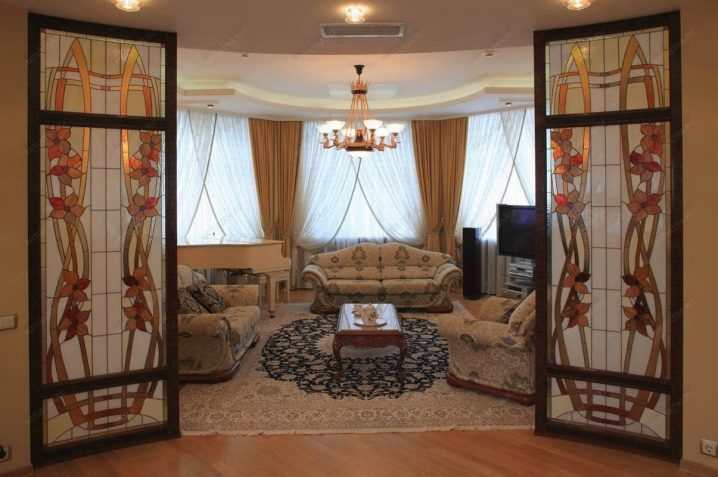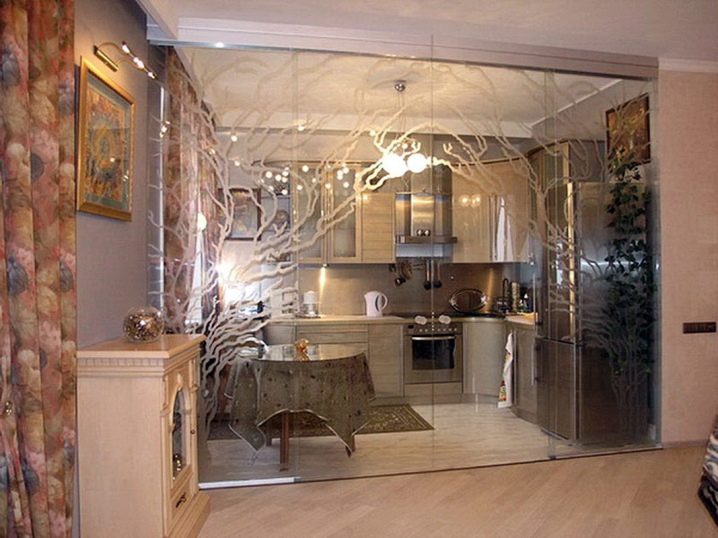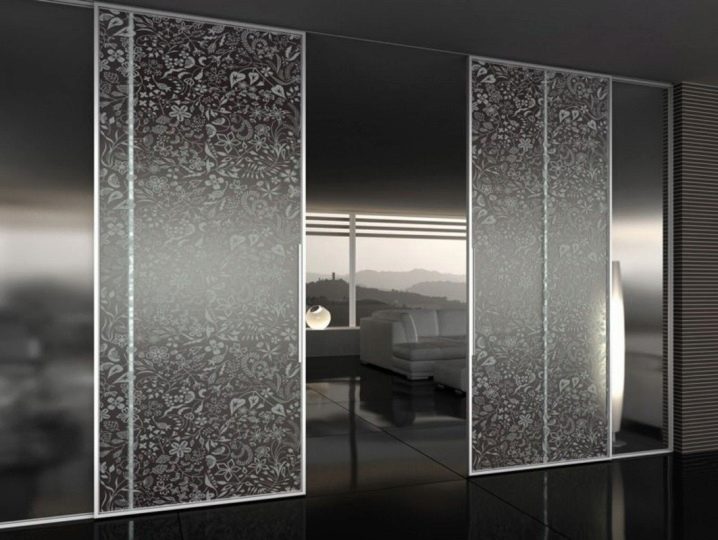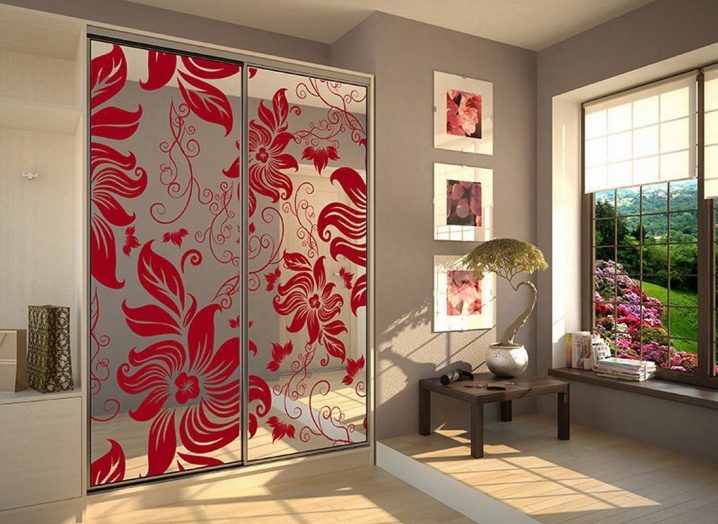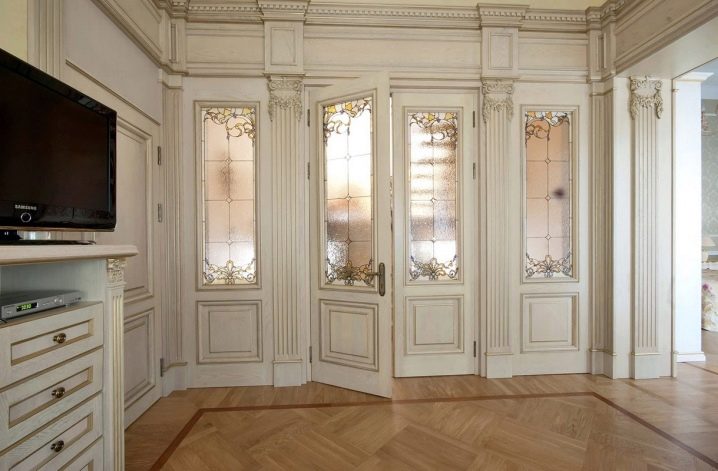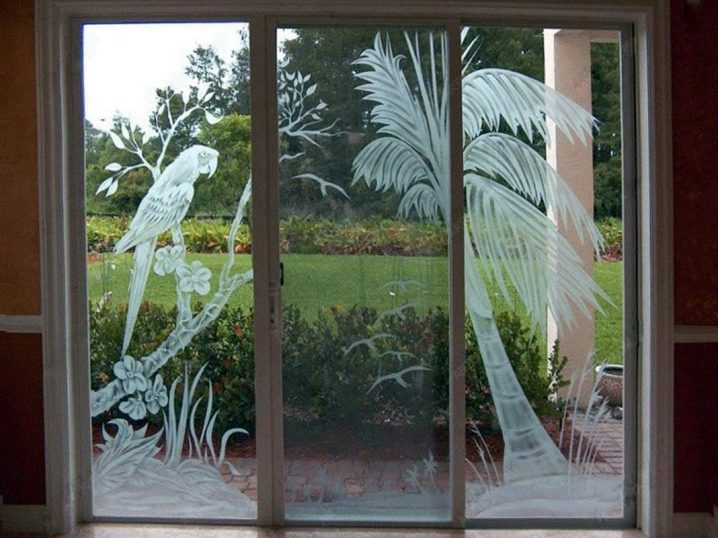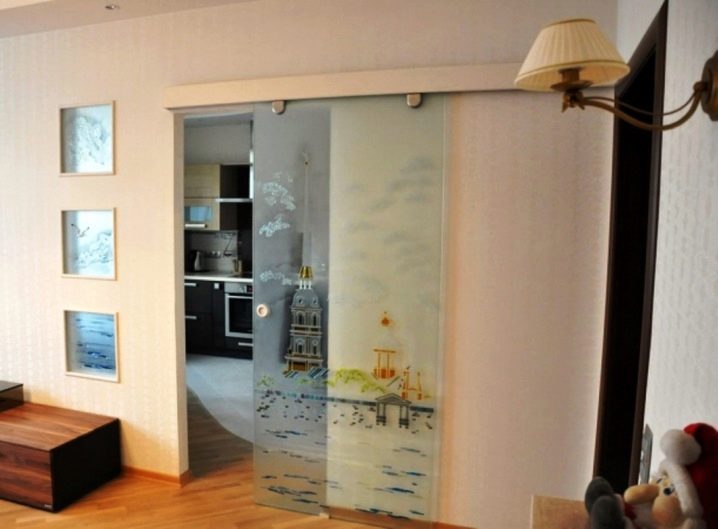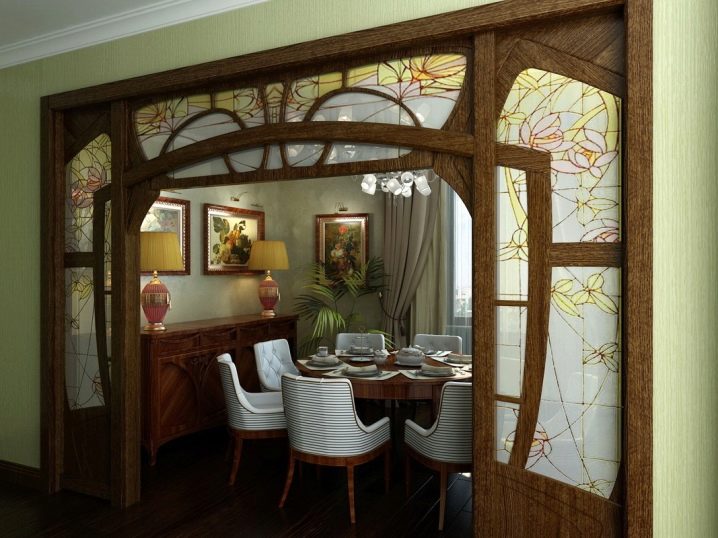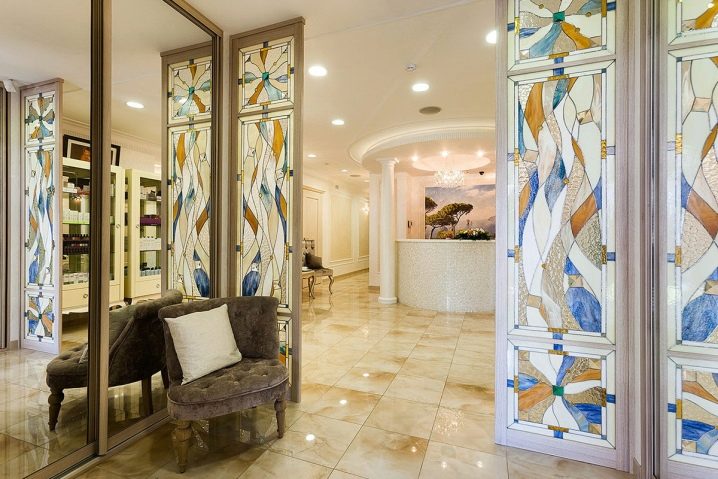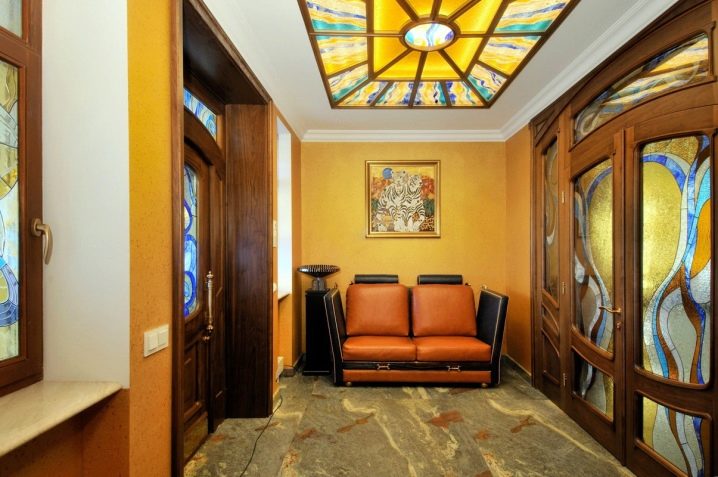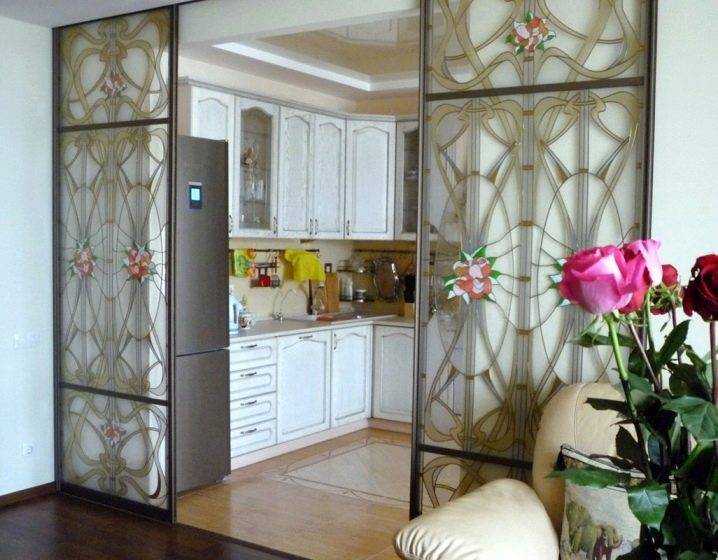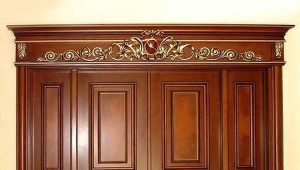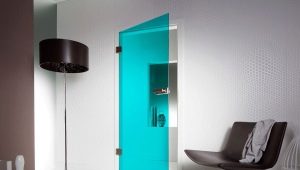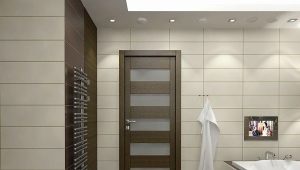Stained glass doors in a modern interior
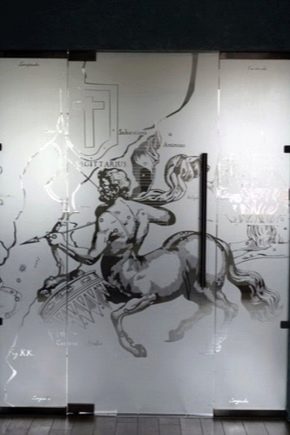
Currently, the art of creating stained glass doors is experiencing its revival. This is due both to the emergence of new technologies in the processing and preservation of glass, and to the irresistible burden of man to the beautiful. With the help of stained glass decoration, an unremarkable interior can be turned into a luxurious one, and a simple door or window can be turned into a work of art.
What it is?
Stained glass is the ancient and beautiful art of making mosaic pictures with pieces of glass. A fascinating example of stained glass is the design of the windows of Chartres Cathedral, so beautiful that it is impossible to look away from them.
Inserts of stained glass in the door began to use a relatively long time, but in recent years, this type of design has reached the peak of popularity.The nuances of the appearance of the stained glass door are largely dependent on the technique used in the manufacture of stained glass.
Tiffany's way
Classic stained glass windows are mosaic, when they are created, each piece of glass is placed in a fragment of the picture prepared for it, where it is fixed. Thanks to the metal strips soldered together, the pieces of glass retain their location, and it also gives the whole picture strength and stability. Application for decorating glass of all shades and textures allow you to create the effect of painting on the door.
It was in this way that medieval stained glass windows were made. This technique was developed and perfected by the American designer Louis Tiffany, who created many amazing stained glass paintings. That is why at present this technique is called the Tiffany method. Its type is a facet stained glass window, in which simpler geometric images are created.
Glass produced in this way has considerable weight, but surpasses all possible analogues in beauty and is a favorite for decorating doors in luxurious interiors.
To give greater strength, some manufacturers place it between two layers of transparent glass with an airtight gasket on the edges. The double-glazed window obtained in this way is easy to clean, does not lend itself to external influences, retains heat better and is suitable for inserts into the entrance doors.
Fusing
This technique does not provide partitions between pieces of colored glass, the fragments flow one into another, forming a complex hand-drawn composition, which turns out to be abstract. Fusing is created in smelting furnaces. Under the influence of high temperature, the glass is sintered in a monolith, from which stained glass inserts are made.
Fusing allows you to create non-standard textures of stained glass, including:
- "Comb" - a kind of "combed" glass;
- "Engraving"which is created by adding granules;
- "Pate de Veer" - molded glass;
- "Painting"which turns out when adding metal powder;
- "Bending" - curved shape.
Stained glass windows made in fusing techniques resemble watercolor drawings, are lightweight and easy to clean.Due to such characteristics, they are used to design not only doors, but also paintings, panels or kitchen aprons. In conjunction with fusing on the door leaf, such decor adds integrity to the interior and looks especially attractive.
Painting on glass (jellied stained glass)
Drawing on glass is also a way to create stained glass windows. Different types of paints are used. Some of them, for example, water-based paints, require subsequent firing. Alkyd paints, among which there is luster, marbled, foaming and many more varieties, dry at room temperature.
When used as inserts in the door for greater strength, painted stained glass windows are varnished or decorated in triple glazing.
Sandblasting
This method has appeared recently and allows you to get stained glass windows in pastel shades. The process consists in removing the surface layer from the glass. Penetration into the thickness of glass is allowed at different depths, the picture eventually turns out to be voluminous and looks realistic.
An advantage of stained glass windows created using sandblasting technology is the integrity of the glass array, its insignificant weight and the production of unique monochrome drawings.A canvas with a similar pattern can serve as a whole door or become part of a complex composition, but in any case it will become the “highlight” of the room.
Film method
In the manufacture of stained glass can be used other options, for example, film method, which is not considered durable, but is suitable for those who like to often change the decor of interiors. The film on the glass doors looks impressive, but is less spectacular than the other options.
Types and materials of construction
Interior doors can be decorated with inserts-stained glass, but can be completely made of stained glass.
Stained glass inserts combine with various materials:
- With traditional wood;
- With tree substitutes: MDF or HDF;
- With plastic (PVC);
- With glass or mirror;
- With metal.
Tree
Wood is a classic material for the manufacture of doors, amenable to all types of processing, but it has a serious drawback: it can absorb moisture or crack, and this, in turn, leads to the appearance of cracks in the stained-glass insert.
To prevent this effect, the material is pre-dried in special chambers, then it is treated with waterproofing impregnations and color is applied,which is fixed by several layers of varnish.
With this treatment, stained glass doors of wood serve for decades without cracking, and in case of loss of color they are amenable to restoration. The stained-glass window is fixed in a wooden structure with the help of beadings; at the same time, framed doors with stained glass inserts with a classic broach look especially fashionable.
MDF or HDF
Doors from wood substitute usually have a frame of spliced timber, made in accordance with the requirements for wood processing, which is sheathed with MDF sheets and covered with veneer. Such doors can fade, but they are not subjected to deformations with temperature drops, and in the case of high-quality varnish coating they can successfully withstand short-term moisture.
An important point when installing a stained-glass insert in the door of wood substitutes is its weight: the stained-glass window, which is installed in such canvases, should not be too heavy, since MDF or HDF simply will not stand.
PVC
Plastic constructions are not afraid of high humidity, so they are used in swimming pools, on balconies and in bathrooms, where the influence of moisture is especially noticeable.They are durable: the life of some brands is up to 40 years. The downside is the fact that such a door will not be able to withstand heavy stained glass, and, of course, not every image will look advantageous in a frame made of plastic.
Glass
Glass sliding doors-stained-glass windows can be of two options:
- Frameless, which are mounted on a complex system of cables and fittings and look particularly attractive;
- Glass doors on an aluminum metal frame or in a wooden box.
In all cases, the door leaf is made of highly durable tempered glass or mirror, the quality characteristics of which are comparable with PVC. The stained glass in this case may be the entire door leaf entirely, for example, when sandblasting, but combinations of various stained glass techniques with monolithic glass may look interesting.
Metal
Stained glass can also be used for inserts in metal entrance doors. In this case, it should be particularly durable, for example, made of triple glazed windows, as it is exposed to aggressive environmental factors.These doors can decorate the front door of a country house, the door of a cafe, restaurant or hotel.
Special features
Stained glass doors inside the premises are designed to implement the zoning of living space without making significant changes in the layout, and this explains their popularity. Another advantage is that when they are applied, there is no effect of a closed space, since this element of the decor lets in light and leaves a feeling of lightness and lightness, which is not typical of monumental partitions.
These doors are ideal for the allocation of recreation areas, transitions to the verandas, exits to the pools and winter gardens. To create them, they use both classic colored stained glass windows and sandblasted glass, various types of fusing and drawing.
Stained glass can be installed in almost any door. Large stained glass windows will look most attractive in the construction of double-leaf sliding or hinged doors, while not so much their size is important as the consistency of the scale of the doorway and the design.
Single-door sliding doors can also be ennobled with a stained glass window that will be visible.when the door is in the closed position.
Very popular glass sliding doors, decorated with sandblasted pattern. To enhance the effect on such doors, LED lighting is used or painted with colored lacquers on the wrong side.
Coupe doors and case doors make it particularly advantageous to show the beauty of the stained glass windows mounted on them. This is due to the fact that the picture will be visible on the doors in all positions: in the closed form it will decorate the doorway, and in the open it will be a colored background on the wall.
Design Design
The choice of a stained glass window for a door is primarily determined by the style of the interior. The most colorful look - the classic Tiffany stained glass window - will best fit into the luxurious setting of the living room in the style of vintage, modern, art nouveau or Provence. The brightness of the door with glass inserts successfully set off pastel-colored furniture, light walls, natural colors of the parquet.
Stained glass doors in sandblasted technique can be solo, if they are made with the use of coloring varnishes, or fade into the background due to the monochrome of the image.Shadow sandblasted design allows you to add sophisticated accents to the interior without complicating it. It will be combined with furniture of any color and will complement the interior design in modern minimalist styles: hi-tech, techno or gothic.
Stained glass, made in the technique of fusing, is most often used in the form of inserts in panel doors. The brightness of colors and the texture of the game attracts such attention to the maximum of glass, so the rest of the interior should be in harmony with it, overlapping with the tones that are present in the mosaic glass. A bright accent in the form of stained glass from fusing will be appropriate in modern, art deco, baroque or art nouveau styles.
Examples in the interior
In each of the modern design trends, you can design beautiful stained glass doors, which will either complement the interior or dominate it. In all cases, the presence of stained glass will fill the room with light and increase it visually.
Doors with stained glass inserts can enliven a dark corridor or a hallway. The practical color of the tree, for example, wenge, can be diluted with bright spectacular color stained glass, the shades of which must necessarily overlap with the tone of the floor, walls and metal of the door hardware.
The front door of a country house can become a masterpiece of fine art, if you decorate it with a complex stained glass window using Tiffany technique, depicting a spreading tree. In this case, the picture emphasizes the natural materials from which the door, steps and the bases of the columns are made.
Frameless sliding door-stained glass, completely glass and from this unusually light and airy, can be made in sandblasting technique using tinting varnishes. Such a door will be the soloist in the room, setting the tone for the whole interior. However, the wall coverings and furniture should not be overly catchy, so as not to “beat down” the perception of the glass masterpiece.
Review the manufacture of stained glass for the door, see the following video.
